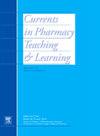针对从事癌症护理的药剂师的在线、循证药物基因组学教育项目的可用性测试
IF 1.4
Q3 EDUCATION, SCIENTIFIC DISCIPLINES
引用次数: 0
摘要
可用性测试提供了有价值的信息,以确保新开发的教育计划被认为是可接受的目标受众。目的是评估内部开发的在线循证药物基因组学教育项目的可用性,在澳大利亚一家公立肿瘤医院的药剂师大规模实施之前,随后改善用户体验。方法方法经许可改编自Benedict et al.(2022)。五名药剂师使用“有声思考”方法测试了八个模块中的两个。参与者的视频、音频和屏幕都被记录下来,并有自动音频转录。一名引导者在场,以促进思想的语言化,提出标准的可用性测试前和测试后的问题,并指导用户完成三个定量工具;系统可用性量表(SUS),标准化用户体验百分位排名问题(SUPR-Q)和WebQual。两位研究者采用了反身性主题分析。结果根据生成的代码最终确定了4个主题;识别内容的有用性,阻碍理解的因素,可接受的用户体验和糟糕的用户体验。SUS和SUPR-Q的平均得分分别为83.1 (SD 14.9)和4.6 (SD 0.2), WebQual的总体平均得分为6.1 (SD 0.2),均表明可用性较好。总的来说,药剂师们很重视课程的内容,并发现课程的形式在视觉上令人满意和吸引人。该教育计划被认为是可接受的,有用的,并且是药剂师在药物基因组学实践之前的积极学习经验。结果被用来通知程序的变化,以进一步提高用户体验。结论项目实施后将进行过程、结果和实施评估。本文章由计算机程序翻译,如有差异,请以英文原文为准。
Usability testing of an online, evidence-based pharmacogenomics education program for pharmacists working in cancer care
Introduction
Usability testing provides valuable information when ensuring newly developed education programs are deemed acceptable to the target audience. The aim is to evaluate the usability of an online, evidence-based pharmacogenomics education program, developed in-house, to subsequently improve the user experience before wide scale implementation to pharmacists at an Australian public oncology hospital.
Methods
The methodology was adapted from Benedict et al. (2022) with permission. Five pharmacist-users tested up to two of eight modules utilising the think-aloud method. Participants' video, audio and screens were recorded, with automated audio transcription. A facilitator was present to prompt verbalisation of thoughts, ask standard pre- and post-usability testing questions, and guide users to complete three quantitative instruments; System Usability Scale (SUS), Standardised User Experience Percentile Rank Question (SUPR-Q) and WebQual. Two researchers employed reflexive thematic analysis.
Results
Four themes were finalised based on generated codes; recognition of usefulness of content, factors inhibiting understanding, acceptable user experience and poor user experience. The mean SUS and SUPR-Q scores were 83.1 (SD 14.9) and 4.6 (SD 0.2) respectively, and the overall mean WebQual score was 6.1 (SD 0.2), all indicating good usability. Overall, pharmacists valued the program content and found the format visually satisfying and engaging.
Discussion
The education program was found to be acceptable, useful, and a positive learning experience for pharmacists prior to practicing in pharmacogenomics. Results were used to inform changes to the program to further enhance the user experience.
Conclusion
Process, outcome and implementation evaluation will be conducted after program rollout.
求助全文
通过发布文献求助,成功后即可免费获取论文全文。
去求助
来源期刊

Currents in Pharmacy Teaching and Learning
EDUCATION, SCIENTIFIC DISCIPLINES-
CiteScore
2.10
自引率
16.70%
发文量
192
 求助内容:
求助内容: 应助结果提醒方式:
应助结果提醒方式:


